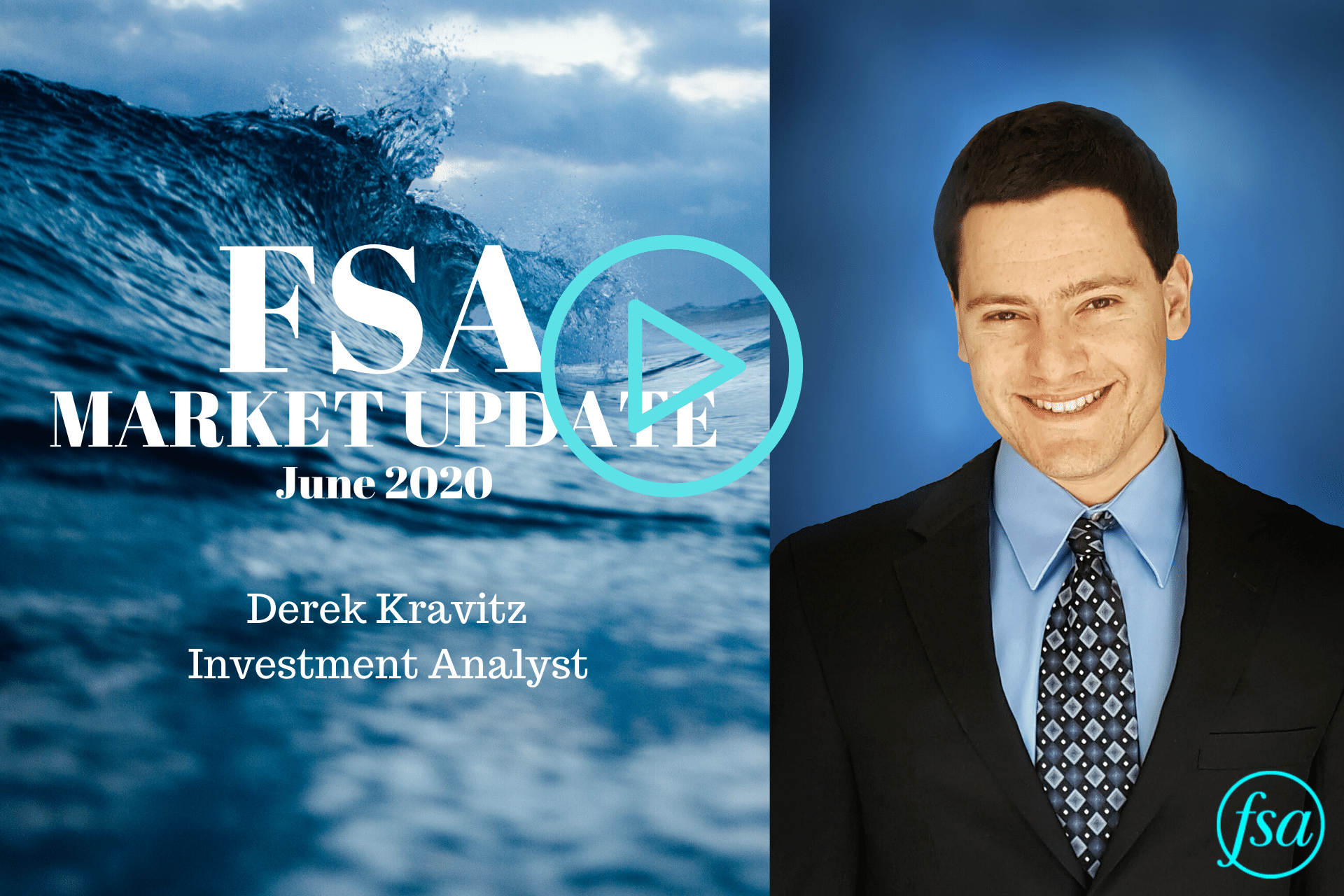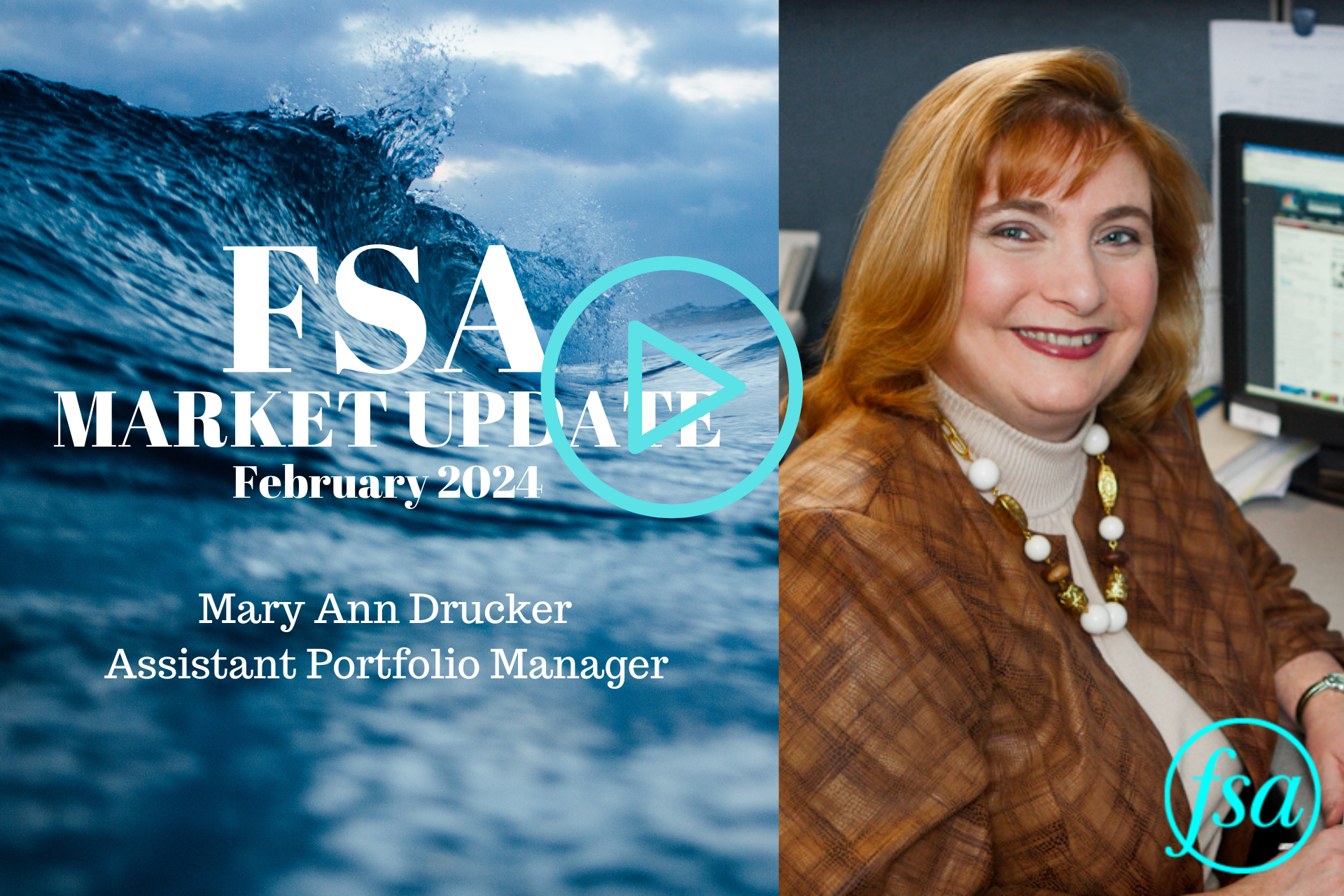Derek Kravitz, Investment Analyst, explains the recent negative oil prices and what happened following that.
June Stock Market Update Transcript
Hello everybody. My name is Derek. I’m the investment analyst here at Financial Services Advisory today reporting to you from my home in Arlington, Virginia, as we continue to practice social distancing as a firm.
Today I want to talk to you about negative oil prices. You may have heard in the news a month or two ago about negative oil and be wondering why aren’t you getting paid to go fill up at the pump. Today I want to talk a little bit about the phenomenon that happened in late April that caused negative oil prices and what that actually meant.
The price of oil coming into 2020 was already under pressure because oil-exporting nations, led by Russia and Saudi Arabia, were not in agreement about how much to supply world markets. This came to a head as they decided to basically play a game of chicken with each other and see who could make the other one blink first.
This perfect storm reached an epic climax on April 20th as something that had never happened before in the oil markets happened. The price of the May 2020 West Texas intermediate oil futures contract collapsed to a negative price at $37.63. This stunned market observers, including yours truly.
Before we go further, let’s cover some terminology. When you hear that the price of oil went negative, it requires some clarification. Oil is a physical commodity that is traded on futures exchanges along with other commodities such as wheat, milk, corn, gold, et cetera.
So what exactly is a future? A future is a contract to purchase a commodity at a predetermined date in the near future, hence the name. There are several futures contracts for each commodity at definitive points in time, usually sequentially at each month into the future, so think July, August, September, et cetera.
One oil futures contract corresponds to 1,000 barrels of physical oil. Therefore, due to a delivery of that size, it’s a little hard for you and I to go out and buy an oil futures contract when it’s negative and just store it in our garage until the price recovers.
So why the negative price? As a physical commodity, oil has an implicit cost of carry. It is a physical good that must actually be stored somewhere. Storage can be in the form of a tank in Cushing, Oklahoma, where excess supply usually goes, or on a tanker ship in the ocean, but once it’s out of the ground, it needs to be stored somewhere until it’s refined for consumer use.
The price of the May 2020 West Texas intermediate oil futures contract went into negative territory because that’s what it cost to store the physical oil at the time that the futures contract was expiring. There was a mad dash and panic from commodity traders as they realized they could not take delivery of 1,000 barrels of oil either, so that just happened to be the cost at the time, and it overwhelmed any value that the physical oil actually had.
So when you hear that the price of oil went negative, it’s only accurate in that the price of the May 2020 futures contract for oil went negative, and the reason was due to lack of storage. Hardly anyone at this time probably actually owned the contracts. It was just a few traders who were just being forced to exit their positions as they were not able to take physical delivery of the oil that the futures contracts stipulated.
As of late April and early May, the front-dated futures contracts had recovered to a positive value of about $10 to $13 per barrel. As of this video, we have seen a rebound in oil futures prices to well above $30 per barrel.
The June 2020 oils futures contract did not go negative in the same way that the May futures contract did at expiration, so as of now, negative oil prices appear to have been a short-lived and isolated incident. However, at Financial Services Advisory we are always monitoring relevant market trends, and this includes anything that may come up in the commodity markets.
As an update on portfolio activity here at FSA, in late May stocks broke above their long-term trend lines which is signaling to us that a new uptrend is developing. As a result, in June we will be moving the portfolios from a more defensive position with money market levels around 50% to more aggressive levels.
As a result, you will continue to see money market positions coming down as we add various stock and bond positions to the portfolios. Always, however, we have the FSA safety nets in place in case stocks revisit the turmoil that we witnessed in March and April.
Please do not hesitate to reach out to us with any further questions at questions@fsainvest.com.
For this market update, I’m Derek, the investment analyst at Financial Services Advisory. Thanks for watching.
FSA’s current written Disclosure Brochure and Privacy Notice discussing our current advisory services and fees is available at www.FSAinvest.com/disclosures or by calling 301-949-7300.




